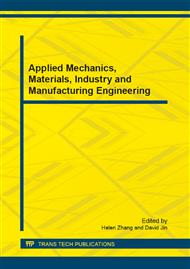p.330
p.334
p.338
p.344
p.348
p.352
p.356
p.362
p.366
Research on Energy Saving Mechanism of Optimal Regulation Voltage for Overhead or Gantry Crane Based on Mechanics Analysis
Abstract:
For overhead or gantry crane direct relationship between electric total loss and stator voltage or load torque is obtained based on the asynchronous motor’s Γ-shape equivalent circuit because the stator’s copper loss and iron loss are regarded as invariable loss that only relates to stator voltage and the rotor’s copper loss is regarded as variable loss that is changed following load torque’s changing. The optimal regulation voltage is obtained through mathematical calculation on the condition that make the asynchronous motor be stable running. The electric total loss will be minimum when the stator’s voltage is the optimal regulation voltage. The research results showed: the electric total loss’s error between the exact solution and the approximate solution obtained according to the approximate slip ratio while the asynchronous motor’s stable running was bigger when the stator voltage was less than 200V, and the error was nearly zero when the stator voltage was more than 200V, but the optimal voltage error would not be more than 7V; the crane’s effect of energy saving was prominent with optimal voltage regulation mode according to the load torque’s changing.
Info:
Periodical:
Pages:
348-351
Citation:
Online since:
April 2012
Authors:
Keywords:
Price:
Сopyright:
© 2012 Trans Tech Publications Ltd. All Rights Reserved
Share:
Citation:


